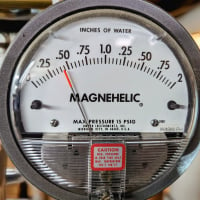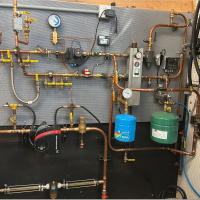Best Of
Re: Steam Radiator Square Foot
This site might help, look at the datasheets. Keep in mind the cabinet also makes a difference with regard to output.
Re: Best Material to Use for Drainpipes in Residential Homes.
Cast does seem to last a really long time, most of the time.
But I am genuinely curious how long until this becomes a possibility. PVC and ABS stay nice and smooth.
Obviously you shouldn't be flushing such things regardless, but people are people.
 ChrisJ
ChrisJ
Re: dealing with twists in the pex , not staple up. I have Omega extrusions now. YAY!
Good points!
a compact 1/4" 12V Dewalt impact is fairly light. A magnetic wrist band keeps the screws close to the tip of the 1/4" magnetic driver, so very little wasted motion.
Less poked fingers from keeping zip screws in a tool bag on your belt :)
 hot_rod
hot_rod
Re: Heat will Not Turn Off
mattmia, I believe that the L1 from the field supplied power switch goes to the circuit board at S1 on the right had side of the board. From ther it feeds several locations on the board including #1 on the 9 pin connector that goes to all the high limits in series on the furnace before returning to #4 on the 9 pin connector. From there #4 feeds a signal to the onboard software that the limit switches are closed and therefore the #2 pin on the 9 pin connector is powered. #2 on the 9 pin connector eventually connects to one of the orange wires that go to that relay in question, and then return to ultimately connect to the oil burner #5 terminal also labeled L1. Following that path, the 120 VAC must go thru the High Limit(s) before it gets to the orange wires that feed the burner thru the relay that was defective.
That relay getting stuck closed still have the high limit(s) in the series circuit. I know this because that is how the limits are configured when the Beckett burner is used on that Thermopride and the limits are the same on that system. So the limits are where they should be regardless of the burner brand used.
Re: Is the circulator pump too powerful?
I suspect that a Flo Control (check) valve would solve this. I Imagine Zones 3 and 4 are next to each other?
Really, each zone should have it's own flow control valve.
Re: Is the circulator pump too powerful?
Has this always happened? …or is this something new?
There may be something called Ghost Flow happening as a result of the piping configuration of Zone 4 and Zone 3 with regards to gravith flow within the pipe. I might take a guess that Zone 3 has larger pipes than the other zones that show no problem. The larger pipe is more susceptible to Ghost Flow. Here is a description of Ghost Flow from an old book on Zoning Made Easy. Look on page 11. One Zone One Circulator
If it is not Ghost Flow, then we need some of the Photos of the boiler room to include the pump locations in reference to the boiler and the different Tee fitting locations for each zone takeoff. If this is a new problem then perhaps an existing Flow Control Valve is stuck. Have you had any boiler work done just before the problem presented? Like a replacement pump installed or a new zone added?
If this is a "always been there" problem, then there may be a piping design flaw.
Re: Is the circulator pump too powerful?
The Taco pump for the 3rd floor has an internal flow check which is stuck open or has some debris in it. It’s in (or should be) the discharge side of the pump. Fix that and your problem will be resolved.
 Ironman
Ironman
Re: Is the circulator pump too powerful?
Without knowing more information, it looks like the pumps for zones 2,3 and 5 are too large and that you need some check valves to prevent ghost flow.
Re: Best Material to Use for Drainpipes in Residential Homes.
Foam core is a reference to manufacturing process. Solid and foam core look alike and perform very similar. With exception of weight and labeling, cannot tell difference through examination even on cut surfaces.
Due to lower density foam core transmits sounds more readily. I’ve also seen boiler specification that said foam core PVC cannot be used for venting applications.
 PC7060
PC7060




